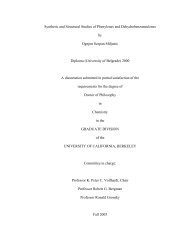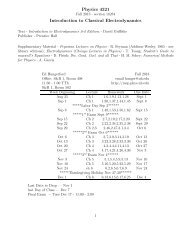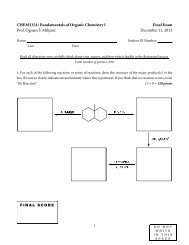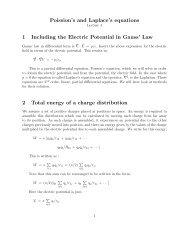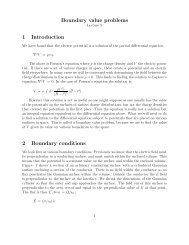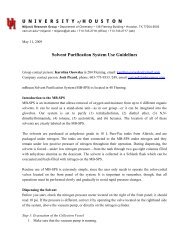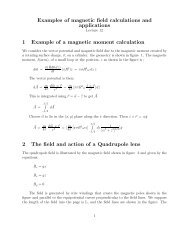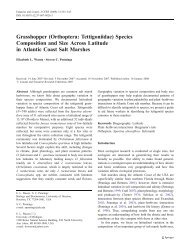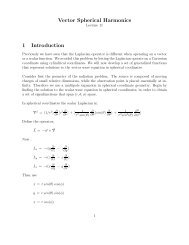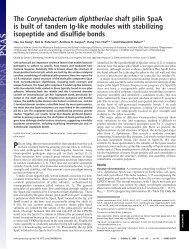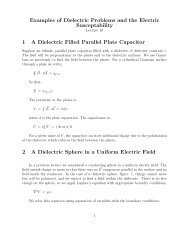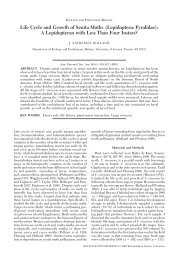Scattering 1 Classical scattering of a charged particle (Rutherford ...
Scattering 1 Classical scattering of a charged particle (Rutherford ...
Scattering 1 Classical scattering of a charged particle (Rutherford ...
Create successful ePaper yourself
Turn your PDF publications into a flip-book with our unique Google optimized e-Paper software.
zθn^^k ina^xx^φa^yFigure 3: The geometry used to obtain the polarization vectors for <strong>scattering</strong> from a dielectricsphere4 Dipole cross section for a dielectric sphereUsing the Poynting vector and the dipole fields obtained previously. We find the differentialradiated power for dipole.dσdΩ = r2 |â · ⃗E sc | 2ẑ · | E ⃗ in | 2The unit vector â defines directions perpendicular to the observation direction ˆn. Substitutionfor the field givesdσdΩ =k4(4πǫ) 2 |â · ⃗p + (1/c)(ˆn × â) · ⃗m| 2For a small dielectric sphere <strong>of</strong> radius, η, the electric dipole moment <strong>of</strong> the sphere is;⃗p = 4πǫ 0 ( ǫ − 1ǫ + 2 )η3 ⃗ EinUse the geometry shown in Figure. 3. The cross section is obtained for the scattered polarizationperpendicular â ⊥ and parallel, â ‖ to the <strong>scattering</strong> plane as defined by the planecontaining the incident and <strong>scattering</strong> vector directions. From the figure;â ‖ · ˆx = cos(θ) cos(φ)â ⊥ · ˆx = −sin(φ)Averaging over all possible initial polarizations (ie averaging over φ) we obtaindσ ‖dΩ = k4 η 62 |ǫ − 1ǫ + 2 |2 cos 2 (θ)6




